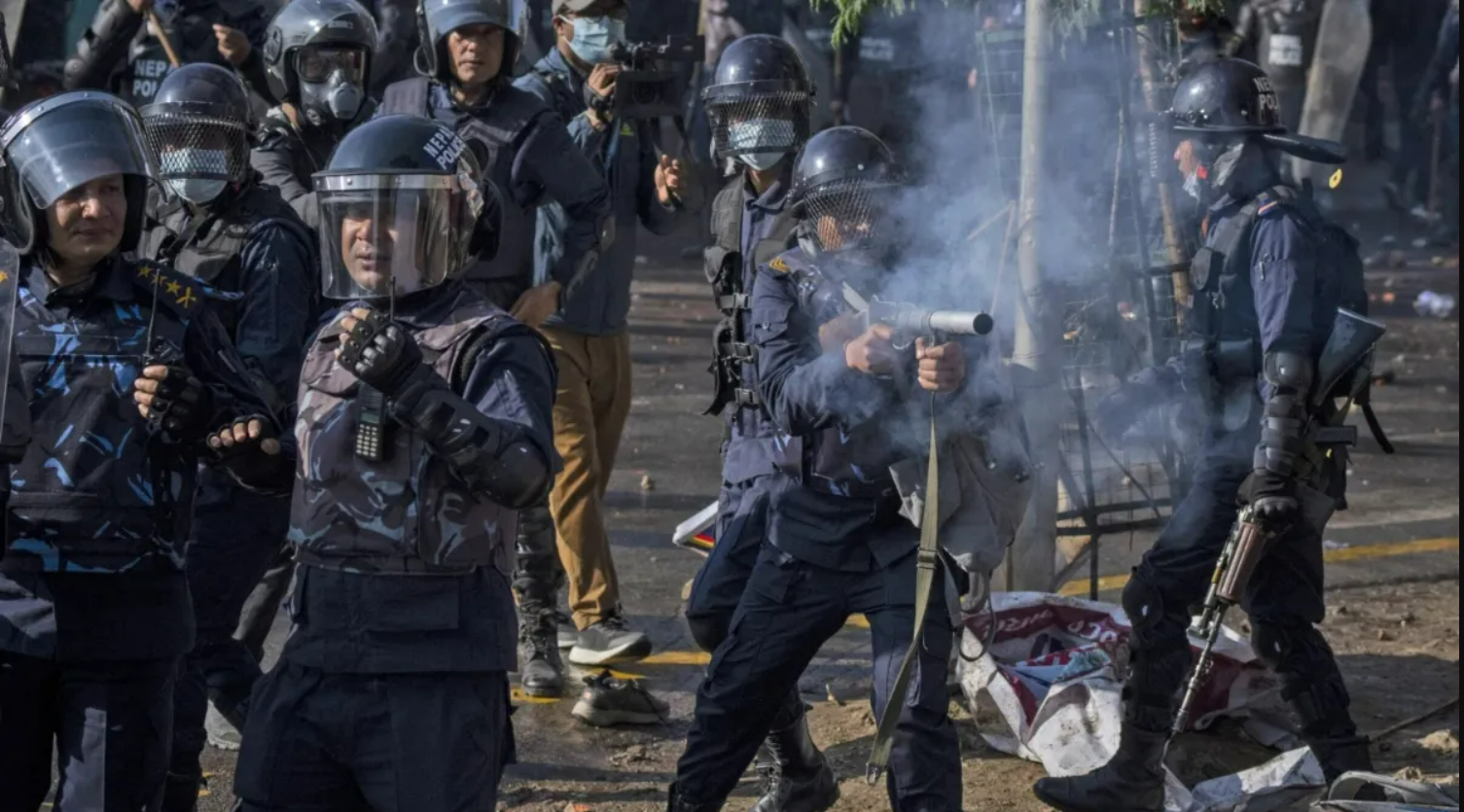
At least 16 people have died in violent clashes across Nepal after protests against the government turned deadly. The violence reached a peak in Damak, where demonstrators targeted the private residence of Prime Minister KP Sharma Oli, throwing stones and chanting slogans against his leadership.
Nationwide Protests Escalate
The unrest began as localized demonstrations over economic hardships but has since spread across multiple provinces. Protesters accuse the government of mismanagement, corruption, and failure to address rising prices of essential commodities. The situation escalated when security forces clashed with crowds attempting to march toward key government buildings.
In Damak, protesters stormed barricades near Oli’s house, leading to violent confrontations with police. Stones and sticks were used by demonstrators, while security forces responded with tear gas, water cannons, and live ammunition in some areas.
Rising Death Toll
Hospitals in affected areas reported an influx of casualties, with doctors overwhelmed by the scale of the crisis. Eyewitness accounts describe chaotic scenes as injured protesters were rushed to emergency wards. Authorities confirmed 16 fatalities, though protest leaders allege the number could be higher.
Government and Security Measures
Prime Minister Oli’s office condemned the attacks on his residence, labeling them an assault on democracy. Officials stated that violent elements had infiltrated otherwise peaceful demonstrations, forcing police to act. Security has been significantly tightened around key political sites, with curfews announced in multiple districts.
Police defended their actions, claiming they used “necessary measures” to maintain law and order. However, opposition parties and rights groups accuse the government of excessive force, calling for an independent inquiry into the deaths.
Protesters’ Voices
For many participants, the protests represent pent-up frustration with years of broken promises. Young demonstrators, in particular, argue that unemployment and lack of opportunities have left them disillusioned. Farmers’ groups, meanwhile, demand subsidies and protection against market volatility.
Chants against rising fuel costs, food inflation, and corruption echoed through the streets, with some protest leaders calling for Prime Minister Oli’s resignation.
Regional and Global Reaction
India, a close neighbor and economic partner, has expressed concern over the violence and urged Nepal to resolve the crisis through dialogue. International organizations, including Amnesty International, have condemned the use of lethal force against protesters and urged the government to uphold civil liberties.
The unrest has drawn attention from global media, highlighting the fragility of Nepal’s political landscape nearly two decades after its transition from monarchy to federal democracy.
Daily Life in Crisis
Normal life across Nepal has been heavily disrupted. Transportation strikes have left highways deserted, while businesses and schools remain closed. In many areas, long queues have formed outside fuel stations and grocery stores as supply chains struggle to meet demand.
Tourism operators warn that the unrest threatens Nepal’s recovery from the pandemic, with international tourists canceling bookings amid safety concerns.
Political Implications for Oli
The attacks on Oli’s residence mark a significant escalation, raising questions about the prime minister’s ability to maintain order. Critics within his party accuse him of failing to address legitimate grievances, while opposition parties are pushing for his resignation.
The violence could deepen political instability, with analysts warning that Oli may face a confidence crisis in parliament if protests persist.
Looking Ahead
With both sides showing little sign of backing down, Nepal faces a prolonged period of instability. Protest leaders are calling for nationwide strikes, while the government insists it will not tolerate violent demonstrations. The outcome of the crisis may shape Nepal’s political direction for years to come, testing its young democracy in one of its most turbulent chapters.
